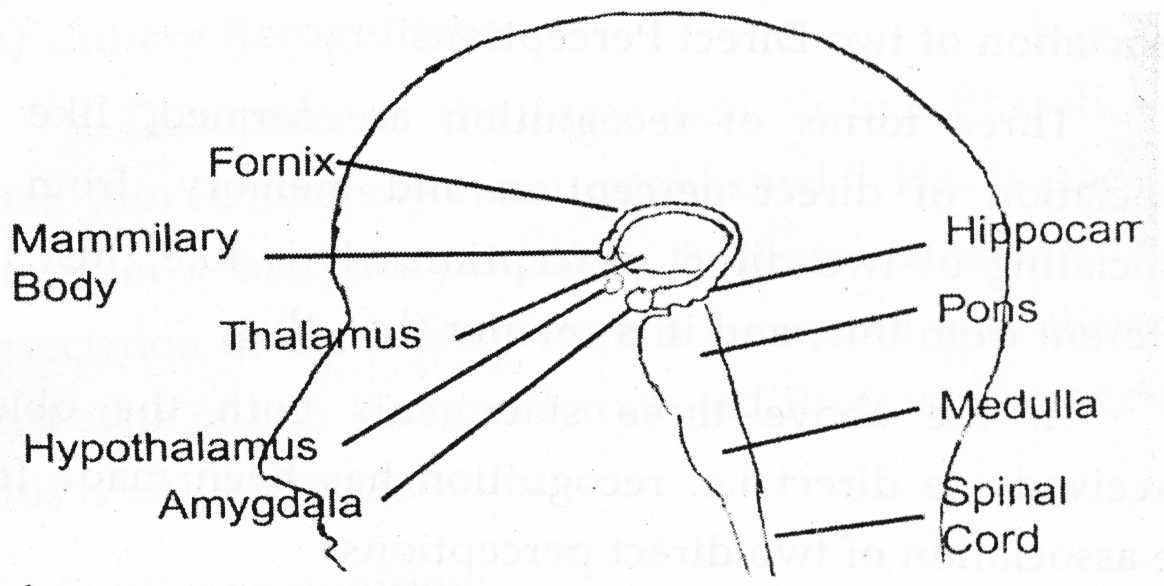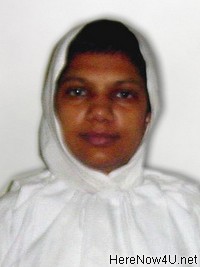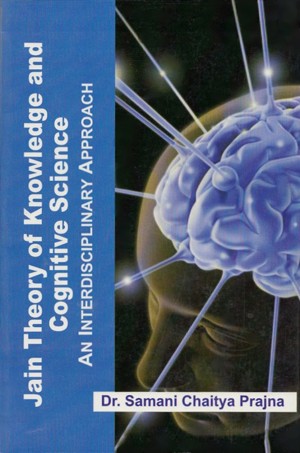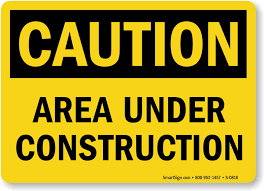3.8 Recognition (Pratyabhijñā): Corresponding Brain Area
The second kind of indirect instrument of cognition is recognition. It has been defined as "anubhava-smrti- saṁbhavam tadevedaṁ tatsadṛśaṁ tadvilakṣaṇaṁ tatpratiyogītyādi saṁkalanaṁ Pratyabhijñā'' That which originates from the combination of experience (direct) and memory is recognition. Such cumulative knowledge as 'this is the same', 'this is like that', 'this is different from that', 'this is the opponent of that', is known as recognition:
According Jain texts like pramāṇa Mīmansa recognition has to be admitted valid as there is some cause, object and form of recognition.
There are two causes of recognition - direct and memory, whereas there is only one cause of memory-retention. The object of recognition is the oneness between the stages of memory and direct perception whereas the object of memory is the object that has been experienced.
The form of recognition is 'This is the same man' whereas the form of memory is 'That was a man'. In the sentence 'This is the same man', 'this man' is sensory perception and 'the same' is in memory. The cognition that is obtained on the combination of the two is recognition.
According to Sanford the simplest view of recognising A as A (for instance) is to suppose that perceptual stimulus is matched against a number of templates stored in memory.[31]
In recognition, there is association of two meanings. Although, it can be the knowledge that is obtained from the association direct perception and memory yet there can be two more terms of it. There are, therefore, three forms of recognition:
- Association of direct perception (present) and memory (past).
- Association of two direct perceptions (present and present)
- Association of two memories, (past and past)
On the association of direct perception and memory we get four forms of recognition:
- Unitary recognition
- Similar recognition
- Dissimilar recognition
- Contradictory recognition[32]
(a) Unitary Recognition:
This place is the same Jain Vishva Bharati where first Jain University was established.' He is the same professor I had met yesterday.' In these statements there is association of the present state is associated with that of the past state of Jain Vishva Bharati and Professor respectively. J This is unitary recognition.
(b) Similar recognition:
'Jain Vishva Bharati is like a Pāśwanath Vidyāpīṭha'-In this statement there is a comparison of the object Jain Vishva Bharati seen now with the object 'Pāśwanath Vidyāpīṭha' seen previously. This is similar recognition.
(c) Dissimilar recognition
Jain Vishva Bharati Institute is different from a Parshvanatha Vidyapitha - In this statement, difference between the Jain Vishva Bharati Institute seen now and the object 'Parshvanatha Vidyapitha' seen previously has been brought out. This is dissimilar recognition.
(d) Contradictory Recognition
'This thing is far from that, this is near to that.'- In this statements the object 'this' seen now is contradictory to the object 'that' seen previously. This is rival recognition. Jain Vishva Bharati gives training in Nonviolence in contradiction to that Institution providing training in violence and war.
Association of two Direct Perceptions
Three forms of recognition are formed, like the association of direct perception and memory, from the associating of two direct perceptions: It is like this, it is different from this, and it is smaller than this.
In the above three statements both the objects perceived are direct i.e. recognition has been made from the association of two direct perceptions.
Association of two memories
Recognition occurring from the association of two memories too, like the association of two direct perceptions is a kind of recognition. Three forms are formed from this association also as - That is like that, That is different from that, That is smaller than that and so on.
In this association, both the objects are indirect. Recognition has been made from the association of two memories.
According to Arnold L. Glass recognition involves three different stages that are associated with three different parts of the brain. First, in the feature analysis stage", in the occipital cortex, for vision, and temporal cortex, for audition, an input is analysed as a set of features and organised into successfully more complex patterns. In the comparison stage in the medial temporal cortex, the representation of the input is compared with many memory representations in parallel.
Fig. 3.6 Brian Areas involved in Recognition

In the response stage, a match activities some representation in temporal cortex, which is communicated to the prefrontal cortex, which results in some sort of identification for input as well as a feeling of a degree of familiarity.[33] Figure 3.6 shows the brain areas involved in recognition. The medial temporal structures include the entire limbic system (amygdala, hippocampus, fornix, mammalary, body), as well as cortex surrounding the limbic system. Fig. 3.6 is a schematic of analysis, comparison, and response stages operate together to produce recognition for the comparison, and response stages operate together to produce recognition for the word 'dog'.[34]
 Samani Chaitya Pragya
Samani Chaitya Pragya

